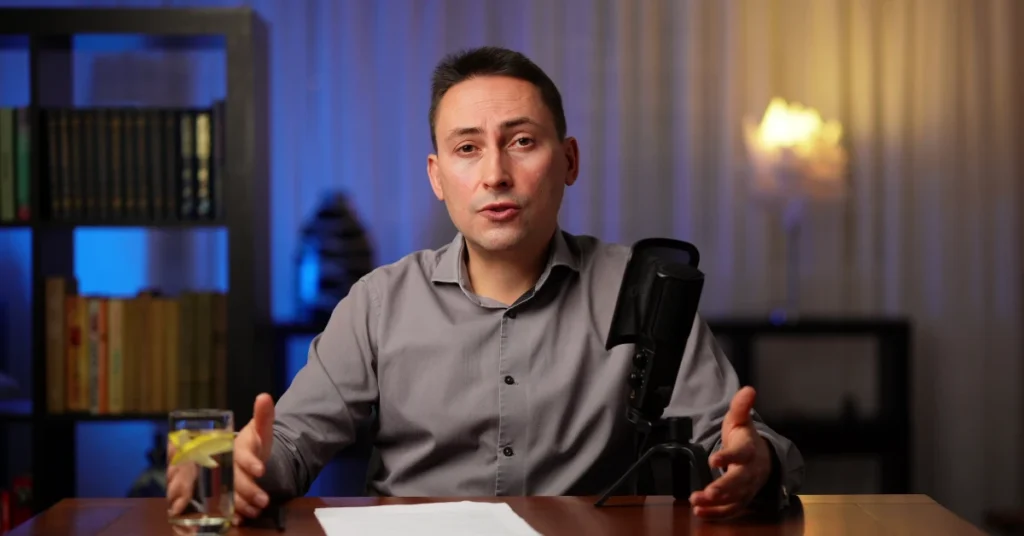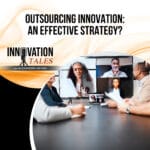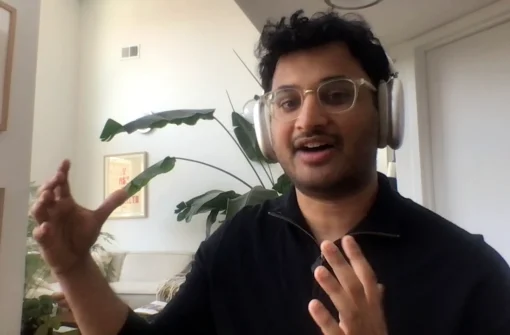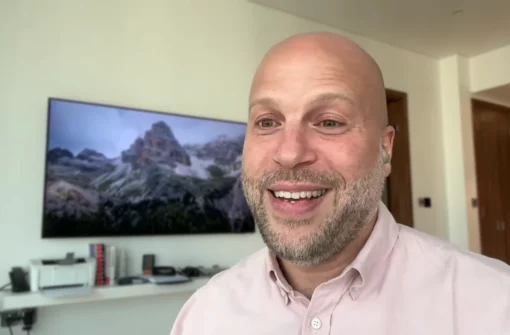
Outsourcing Innovation: An Effective Strategy?
Today we dive into the art of outsourcing innovation, a strategy that can propel companies forward when executed effectively, in this inaugural episode of “Innovation Tales,” the show exploring the human stories behind digital transformations.
Discover, through a captivating narrative, how one insurance company navigated the challenges and triumphs of a new distribution model. We follow the journey of a visionary leader tasked with spearheading a crucial project under the pressure of competition and the need for rapid advancement. Learn about the pivotal decisions, the partnerships formed, and the strategic moves that led to a breakthrough in their market.
This episode isn’t just a story; it’s a blueprint for any business leader or team looking to leverage external expertise to accelerate innovation. By the end, you’ll understand the critical factors that make outsourcing a success and how these insights can be applied to your own business endeavors.
SAFe® and Scaled Agile Framework® are registered trademarks of Scaled Agile, Inc. Please visit https://scaledagileframework.com to learn more.
Transcript
Introduction
Welcome to the first episode of Innovation Tales. I’m so thrilled to be launching this show. Since this is the first episode in Season 1, we have two goals:
1. To give you a taste of the real-world stories that we’ll feature on our show.
2. To give you a sense of the structure and where we expect to go with it. In the coming weeks, we will be releasing a series of interviews with practitioners. For this episode, I’ll be the one sharing a story so I can introduce the three segments that all episodes in Season 1 will have.
Question Of The Day
Let’s start with the kinds of topics we’ll be covering in Innovation Tales. Innovation and digital transformation are some of the most common buzzwords in business today. What is the show about exactly? In this episode, we’ll use the topic of outsourcing as an illustration. Companies have been outsourcing manufacturing and other business processes like customer support for decades, but what about outsourcing innovation? When is that a good idea?
On this show, we’ll explore such topics through the personal journeys of human beings who have to grapple with them in real life. All episodes will bring a narrative woven from true events. To respect confidentiality agreements and safeguard privacy, my guests and I will be modifying the names of the people and organizations involved.
Echoes Of Innovation
Let’s set the stage. This story is about Morgan who at the time was the manager of a business unit at Greenstone Insurance. He had been tasked to take advantage of a market opportunity. Back in those days, there was a shift in the insurance industry towards selling products under a white label. If you’re unfamiliar with the term, think back to buying insurance when booking a trip with an online travel agency.
Very often, that policy will not be underwritten by the travel agency themselves. It’s too far away from their core business. Instead, they will usually sign an agreement with an actual insurer who will underwrite such a policy. For you as the customer, it’s very convenient because those products, the buying of the trip and the buying of insurance, are related to your customer journey. The advantage of the travel agency is that they don’t have to become an insurance company. Instead, they can contract with one.
Let’s get back to Greenstone Insurance. The task for Morgan was clear. He needed his business unit to adopt a new operating model, one where they would sell through distribution partners rather than directly to consumers. For example, we can think of the branding of the marketing material associated with these insurance products. Up until now, when they would distribute those products, they would design the brochures to use the Greenstone Insurance brand. Going forward, that branding would need to vary, depending on which distribution partner is selling the product to a given customer.
To be certain, Morgan expected fierce competition from established companies like his own, but also smaller actors and even startups. These nimbler companies could start from a greenfield and select state-of-the-art technological components that would create the capability to sell insurance products under a white label.
On the other hand, the priority for multinationals like Greenstone Insurance would always have to be stability, not innovation. They would have to dedicate a tremendous amount of their IT resources to keeping the lights on and ensuring the stability of the systems that were necessary to service the large amount of products that they had sold over the years.
The priority for multinational companies would always have to be stability, not innovation.
What’s more, when we joined Morgan in our story, the organization had already been attempting this very challenge for two years without success. They had followed the business-as-usual approach and were working with the system integrator that they had been relying on to operate and maintain their systems. This transformation was too complicated. It was too radical a change and the system integrator had made virtually no progress in those two years.
When Morgan agreed to take on this challenge, he negotiated that his business unit would be allowed to operate autonomously, much like a spinoff. They could select an approach that made sense for their circumstances. In order to beat his nimbler competitors to market, Morgan organized the 60 employees of his business unit around value. Organizing around value is a term that comes from the agile world. The idea is to encourage collaboration across functional silos to get people to collaborate on a daily basis from different backgrounds.
Maybe you have not only engineers collaborating with analysts and quality assurance people, but you also have marketing and product all contributing to accelerating the time to market. In parallel and leveraging this agile organization, Morgan sought out an external provider of innovation services and hired a team of external experts who had worked on similar solutions before. As a result, that team was able to deliver an initial minimum viable product within only 90 days.
They were there to innovate. As soon as they finished this initial minimum viable product, they set out to enable the internal employees of the business unit to operate the solution. What’s more, they enabled the specialists of the system integrator I mentioned earlier to maintain and even evolve the solution. Meanwhile, with this capability in place, the business unit onboarded a number of distribution partners. Within only twelve months of its creation, it was celebrating its first revenue. This was a huge success for Morgan and his team. Historically, Greenstone Insurance would take several years in order to enter a new market or create a new distribution channel.
This story illustrates a good way to outsource innovation as an accelerator on the road to market, but it also shows how to mitigate the risks of outsourcing by rapidly transferring knowledge within an agile organization. In the next segment, I’ll provide more details about the approach followed by Morgan. If you found his story valuable, please like and subscribe to help us expand our audience.
You can mitigate the risks of outsourcing by rapidly transferring knowledge within an agile organization.
Blueprints Of Innovation
Morgan decided to organize his people around value as part of a larger adoption of SAFe. SAFe stands for the Scaled Agile Framework. It is a public knowledge base of agile practices that large organizations are able to deploy at scale. Typically, a SAFe practitioner won’t see innovation as a risky bet or one-off adventure. Rather, they will take inspiration from the lean manufacturing world.
Instead of reinventing the wheel for each digital transformation project, of course, no doubt, there is a novelty when you’re creating a new product or service, but the actual process of innovation should be like a factory that reliably transforms ideas into real-life products. Personally, I especially like the Scale Agile Framework because its guidance goes beyond pure questions of methodology.
Given the context of this episode, you’ll be able to find articles about how to select external suppliers to help you create a solution and how to contract with them in order to foster trust. I keep this segment short intentionally because, after all, the show is about the human side of digital transformation rather than specific tools or approaches, but do let me know in the comments if you’d like me to do a deeper dive into SAFe.
Innovator’s Playbook
The third and final segment focuses on practical advice. What would I recommend to people considering outsourcing innovation?
1. External expertise can be great for achieving a quick product market fit.
2. Onboard your first set of customers and partners as soon as you have that initial minimum viable product. This will shave off months from the overall timeline of your initiative.
3. Mitigate risk either by insourcing or at least by differentiating between your external providers of innovation and those that you rely on for operations and maintenance.
Episode Wrap-Up
For this episode, I told you the story of Morgan and Greenstone Insurance. They got the best of both worlds, the super fast delivery of a minimum viable product using a team of external experts and also the sustainability of internal expertise to maintain and grow their solution. Besides the sample of the topics we’ll be covering in future episodes, you also got a preview of the structure we are using to record the episodes in Season 1. Most of them, however, will feature a guest, so be sure to subscribe and be notified when these interviews come out. I hope you enjoyed this episode. Until next time, peace.
—
*** SAFe and Scaled Agile Framework are registered trademarks of Scaled Agile, Inc.






